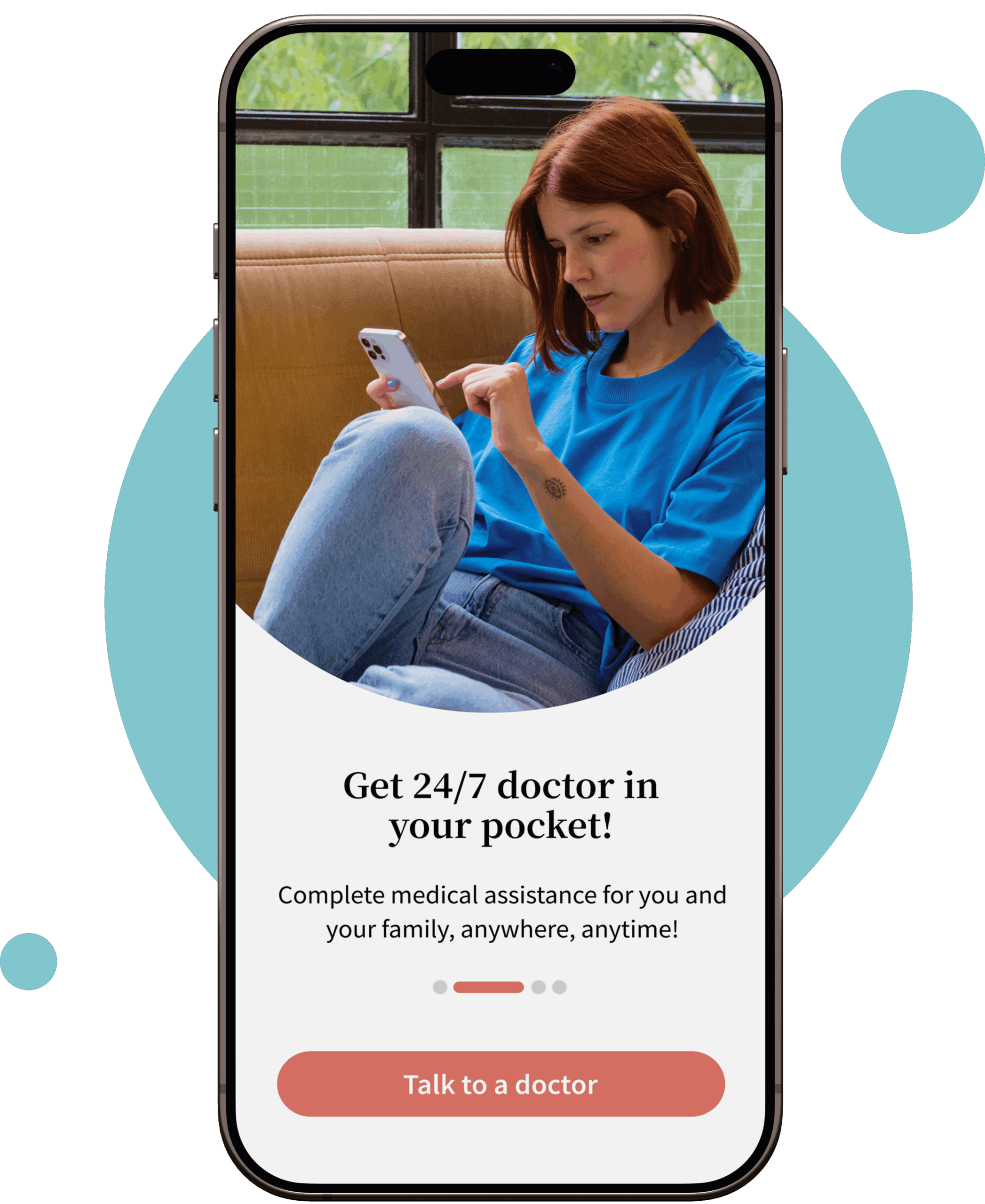Table of Contents
ToggleOverview
A swollen armpit lump could indicate an illness, injury, or infection in the body. In rare cases, it can be a sign of cancer. Armpit lumps are concerning, especially for women, because they can be a sign of breast cancer. They are often hairy, sweaty, and smelly. Yet, paying attention to any significant changes in this often-overlooked area of your body is essential. A lump or bump could mean a swollen lymph node in your armpit, which may or may not be cancerous.
What is an armpit lump?
An armpit lump is a bump in your underarm. It can be due to swelling in the lymph nodes, infections, or cysts. An armpit lump is usually a pea sized small bump but it can grow in size for some people. It is a concerning situation whether itis painful or not you should always prefer seeing a doctor.
What does a lump under the armpit mean?
Lymph nodes will swell as a reaction to an illness, infection, or injury. During a routine exam, you may notice that your doctor will routinely feel the lymph nodes under the jaw, in your neck, and behind your ears. This is because lymph nodes will swell in response to infection. Any upper respiratory infection can cause lymph nodes to swell in this area.
When the swollen lymph node is located under the armpit, it can indicate an illness, infection, or injury in that area. In their normal state, lymph nodes are not able to be felt. When swollen, lymph nodes can swell from the size of a pea to as large as a cherry. Generally, lymph nodes over 1 cm in diameter are considered ‘abnormal.’
Causes of armpit lumps
Typically, the cause of armpit lumps can be viral or bacterial infection, skin infection, injuries, ingrown hair, or in rare cases it can be cancer. Such infections may take 10 to 14 days to resolve. Once you start feeling better, the swelling should also naturally go down. However, it may persist a few weeks longer before it goes away completely. If an armpit lump stays more than two weeks it can be concerning.
Cancer and noncancerous (benign) tumors
The armpit lump can be diagnosed for cancer base don its texture. If it is due to cysts infection or fatty growth it will be soft to touch and moveable. If it is a cancerous lump it will be hard to touch. Fibroadenomas and cancerous lumps are also immobile.
Hair follicle issues
Ingrown hair can stuck under the armpit skin causing inflammation in the area. The condition can be aggravated by waxing, shaving, or the use of deoddorant. If the lump does not go away on its own there may be a need for medical intervention.
Viral infections like Cold and flu
A viral or bacterial infection, such as a common cold, can cause the nearby lymph nodes to become swollen. A lump caused by cold and flu goes away on its own as the infection subsides. It does not stay for more than two weeks.
Sinus infection
A sinus infection in the body can cause the lymph nodes to swell. The lymph nodes can be painful, and the overlying area can be red. Again the armpit lump due to a sinus infection goes away on its own as soon s the infection subsides.
Strep throat
In the case of strep throat, swollen lymph nodes in the neck region can occur. However, the lymph nodes in the armpit can also be a cause and are usually nothing to worry about. An armpit lump is concerning if it is there for weeks or if you are a woman.
Skin wounds or injuries
Bacteria such as streptococcus or staphylococcus can cause skin infections that lead to lymphadenitis. Any disease can cause the lymph nodes in the region nearby to enlarge as the body tries to clear the infection.
Your lymph nodes enlarge due to the invading white blood cells in the region of the infection. The lymph nodes that swell are primarily located near the infection’s site. For instance, in the case of strep throat, lymph nodes in your neck are usually swollen.
Infectious mononucleosis
Infectious mononucleosis is also referred to as mono or glandular fever. This viral infection can cause lymph nodes in the neck and armpits to swell. Mono also results in the following symptoms:
- fever
- sore throat
- body aches
- extreme fatigue
- Headaches
- swelling in the liver, spleen, or both
Mono will eventually resolve on its own. Recovering can take 2–4 weeks, but symptoms can last longer. They rested, took over-the-counter (OTC) pain relievers, and drank fluids to aid recovery.
Why would lymph nodes in the armpit swell?
Although swollen lymph nodes in the armpit may seem scary, they are often simply the result of a benign infection. Bacteria, fungi, or a virus usually cause diseases that spread to the lymph nodes.
While swollen lymph nodes usually result from an infection, they can also indicate other medical conditions. While swollen lymph nodes are more common in the neck, behind the ear, and under the jaw, they can also occur in the armpit.
Swollen lymph nodes in the armpit can be a result of:
- Adverse reactions to vaccinations
- Systemic lupus erythematosus (an autoimmune disease that targets your joints and organs)
- Lymphoma
- Leukemia
Swollen lymph nodes can also result from an injury in the area. Specific injuries can cause scar tissue in place, making it difficult for the lymph nodes to filter the lymph fluid properly. In these cases, surgery may be required to resolve the issue.
Armpit lumps in women
Swollen lymph nodes are not the only reason for a bump in the area. There are many possible explanations for lumps and bumps under the armpit. No matter what you suspect the lump to be, it is essential to have the spot checked by your physician especially if you are a woman.
Breast cancer
Armpit lumps can occur anytime, but it can be a sign of breast cancer in women. Performing monthly self-exams and reporting any findings to your doctor immediately is essential.
During your menstrual cycle, your breasts may change and feel more or less lumpy. The best time to perform a self-exam is about three days after your last period. Keeping your checks consistently at the same time each month is ideal.
Folliculitis
Folliculitis occurs when the hair follicle becomes compromised and inflamed. This often occurs due to shaving incredibly dark and coarse hair. Folliculitis is easily mistaken for acne because it often causes red bumps that may or may not become filled with pus. Folliculitis can be a mild irritation or become inflamed and tender to the touch.
Hidradenitis suppurativa
This painful, long-term skin condition occurs when inflammation near apocrine glands of hair follicles in the skin becomes clogged, leaving behind painful boil-like lumps that will fill with pus, leak, and may become infected.
Fibroadenoma
Fibroadenomas are noncancerous fibrous tissue growth. It is the most common type of noncancerous tumor and is most often found in premenopausal women. Having Fibroadenoma does not increase your risk of breast cancer. This tumor is usually round or oval with a rubbery texture.
Lipomas
These are benign fat tissue growths that are usually completely harmless. They can form anywhere along the body, including the scalp. Unlike swollen lymph nodes, lipomas are not painful to the touch.
Diagnosis
To diagnose swollen lymph nodes, your doctor will perform a physical exam and ask about any pain in the area and any noticeable changes to the lump.
The doctor will examine the area by using their hand to check for the size and texture of the lump. This process is called palpitation.
If the doctor concludes the lump is benign, they may order no further action. If the doctor needs more information to diagnose, they may contain some testing. These tests rule out infection, allergic reaction, and any cancerous changes. These tests include:
- breast X-ray (mammogram), which is an imaging test that may allow your doctor to see the lump better
- complete blood count to measure the number of platelets, red blood cells, and white blood cells in your system
- MRI or CT scan imaging
- biopsy, which involves removing a small piece of tissue or the entire lump for testing
- allergy testing
- a culture of fluid from the lump to look for infection
Duration
Generally, the swelling in lymph nodes under the armpit resolves within 1–2 weeks. However, if the swelling lasts longer or worsens, it is best to discuss it with a doctor.
Treatment
The reason for the swelling will determine the best course of treatment. If the swelling was due to a bacterial infection, it should subside after a round of antibiotics. There is no treatment if the disease is viral, although over-the-counter pain relievers may be recommended to help with the inflammation.
When the swelling results from an allergic reaction, it should subside once the allergen is avoided or proper medication is administered.
If the lump is the result of a cancer diagnosis, it will only subside after treatment of the cancer is completed. This treatment can include:
- Chemotherapy
- Radiation
- Surgery
What can I do at home to treat swollen lymph nodes?
Swollen lymph nodes can be tender or painful. However, specific techniques can be tried at home to ease the pain.
Applying a warm compress can help reduce pain. This can be done by running warm or hot water over a washcloth, wringing it dry, and then placing it on the swollen lymph node.
Moreover, you can also take OTC pain medications, such as acetaminophen or ibuprofen, to alleviate pain.
What does a cancer lump feel like in the armpit?
A cancerous lump in the armpit is usually painful, hard to touch, and non-mobile. It does not go away on its own and needs immediate medical attention. However finding an armpit lump with these symptoms does not always mean you have cancer it can be lipoma or anything less serious too. You should always consider discussing your symptoms with a qualified professional to rule out the possibility of anything serious.
Home Remedies to Treat Swollen Lymph Nodes in the Armpit
- Gentle Massage: A massage improves the overall blood flow to a specific area and may be beneficial. Additionally, the addition of herbs such as neem, turmeric, or sage helps fight off inflammation or an infection.
- Warm Compresses: Applying heat directly on the skin promotes blood vessel dilatation and oxygen flow toward the armpit. Consequently, this alleviates pain and decreases the size of the lump. This may also help the removal of toxins from the body. You can soak a towel in warm water and place the excess water on the affected area for 10 minutes after squeezing the excess water. This can be repeated thrice a day.
- Charcoal Compresses: Activated charcoal is another remedy that might help decrease the lump’s size. Activating Charcoal can remove toxins from the body. Mixing one teaspoon with water and flaxseed powder and applying it to the area for 15-20 minutes can help.
How can swollen lymph nodes be prevented?
Swollen lymph nodes indicate that your body is fighting an illness. Following are the best steps that may help you from catching common viruses in the first place:
- Ensure proper handwashing.
- Avoid touching your eyes and nose.
- Distance yourself from people who are sick.
- Disinfect surfaces in your home and workspace.
- Get enough sleep, eat healthy, and exercise.
When to Consult a Doctor
No matter what is causing the lump or bump in your armpit, early intervention is the best chance of recovery. Don’t wait to schedule an appointment with your doctor. Connect with an authentic North American doctor 24/7 with Your Doctors Online. We make it easy to access the medical advice of a physician from the comfort of home.
FAQs about the swollen lump in the armpit
Cancerous lumps are often described as hard lumps that are not movable. Mostly, they are painless.
If the lump in your armpit is hard, immovable, and enlarged and persists for a long time, it requires an evaluation.
Typically, lymph nodes return to their standard size within two weeks once the infection resolves.
A deodorant containing a chemical that triggers an allergic reaction or immune response can result in swollen lymph nodes in the armpit.







